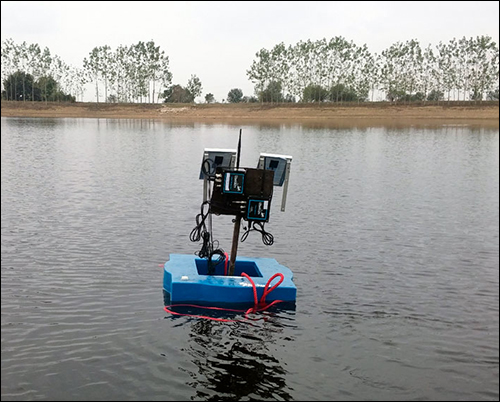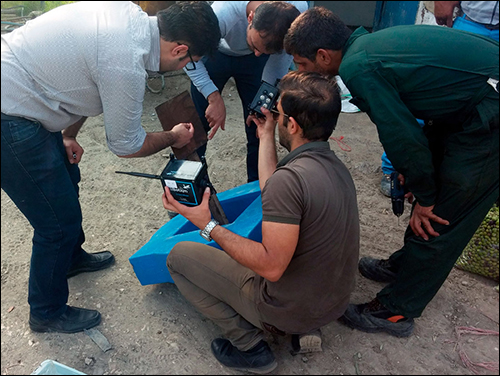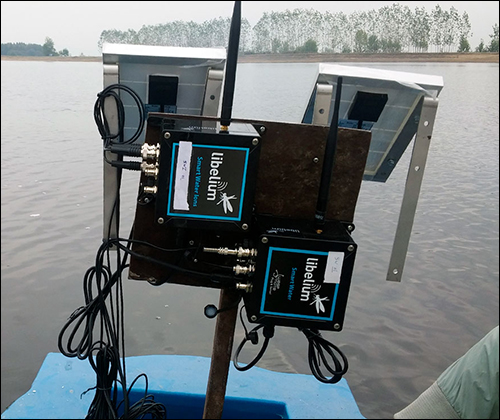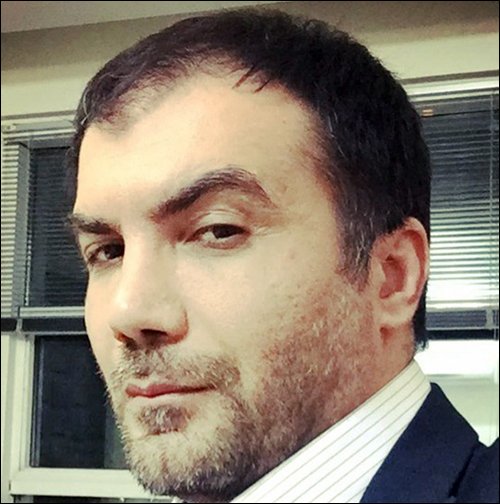Information technology company Afarinesh Samaneh Mehr Engineering Co. (ASM), has completed a proof-of-concept (POC) project at an Iranian fish company to manage the conditions to which farm fish are exposed as they are raised in open pools. The POC found that the rate of fish deaths could be cut by 30 to 40 percent with the technology.
The Internet of Things (IoT) system consists of Libelium‘s Smart Water line of Waspmote Plug & Sense! sensors that employ long-range wide-area network (LoRaWAN) and cellular transmissions to capture and manage sensor data from a pool of water containing farmed fish.
Some fish breeding in Iran is performed in natural pools filled approximately once a year and then emptied at the end of the breeding season. Because the system relies on natural water that is only replaced annually, the system is economical for fish growers, but requires monitoring to ensure the quality of the water, including not only temperature but toxicity.
Mahdasht Milk and Meat Complex completed a six-month POC of the IoT-based technology to manage the water conditions to which its fish are exposed, thereby ensuring the fish’s health. The focus for Mahdasht was to automatically measure the water-quality parameters of its fish farm in northern Iran.
ASM offered the solution. The technology solutions company serves the smart-city, agriculture, husbandry, safety and security markets in Iran, among others. “We conducted this project at the customer’s request,” says Ali Bordbar, ASM’s marketing and business development manager, “to reduce the damage caused by water pollution in fish breeding pools.”
Mahdasht breeds common carp (Cyprinus carpio) and bighead carp (Hypophthalmichthys nobilis). The fish are raised in a large pool that covers about 50 acres and is heated naturally by hydrothermal power. The fish farm needed to track a variety of measurements to ensure the quality of pool water. This included temperature, pH and dissolved oxygen levels, as well as the presence of ammonium and nitrite, which could indicate a toxic environment due to fish feces.
After initial discussions and a visit to the site, ASM installed the solution, consisting of Libelium’s water sensors, in November 2017. Libelium launched the Smart Water line in February 2014, says Alicia Asín, the company’s CEO. Waspmote Plug & Sense! Smart Water was the first water quality-sensing platform to feature autonomous nodes that connect to the cloud for real-time water control, she says.
The Waspmote Smart Water platform includes an ultra-low-power sensor node designed for use in rugged environments, which can be deployed in hard-to-access locations in order to detect changes and the potential risk to public health in real time. The sensors were further developed in 2015 to increase sensitivity and accuracy around water and the chemicals that can be found in water, such as pools.
“Hundreds of different chemicals can combine to harm our water, so water quality monitoring systems must be highly accurate, reliable and easy to calibrate,” says David Gascón, Libelium’s CTO. “Waspmote Smart Water is a solution that simplifies remote water quality monitoring and helps cities and factories manage water resources better.”
The four sensors at the Mahdasht site—two Smart Water sensors that act as gateways and two Smart Water Ion sensor probes—were installed in pairs. Each pair was mounted in a buoy, and the pairs were installed in such a way as to cover the entire pool. According to Asín, they are powered with solar panels to ensure continuous energy supply.
One unique challenge for a water-based deployment was ensuring that the sensor transmissions could be read. “We needed the equipment to be floating on the water for this project,” Bordbar says. The company chose floats that were then installed using sinkers and ropes, to hold them at specific locations in the pools. Each pair of nodes was then mounted in the floats to provide coverage for the entire area.
The sensor nodes captured water measurements and forwarded that information to a gateway on a regular basis via a LoRaWAN-based signal. The gateway, in turn, forwarded the data via a 3G cellular connection.
ASM’s LoRaWAN connectivity software used a network server from Loriot. The software not only collected the sensor data, but provided alerts in the form of text messages, e-mails or displays on the server, to warn authorized parties if the water temperature had exceeded the limits. The software can also provide analytics in the form of diagrams and tables that display the flow of temperature throughout a given day, week or month.
ASM’s greatest challenge during the project was the calibration of sensors, Badbar reports. “In fact,” he states, “our main concern was the accuracy of the data sent from the sensors.” To improve the data-collection accuracy, ASM sent the sensor equipment to Libelium, which calibrated the sensors. ASM then reinstalled them.
According to Asín, the Waspmote Smart Water solution is also being used for potable water monitoring, chemical leakage detection in rivers, remote measurement of swimming pools and spas, corrosion and lime deposits, fish tank monitoring and seawater pollution. However, she notes, “Measuring and controlling fish farms is one of the main applications of the Smart Water platform.”
Following the proof-of-concept, ASM found that the farm was able to reduce labor time that employees previously spent monitoring water conditions, while also reducing the number of fish casualties due to unhealthy conditions. In fact, the company reports, the number of fish deaths seemed to drop by 30 to 40 percent. Conversely, the system led to higher productivity due to having a greater number of healthy fish to harvest at the end of the season.
“After collecting information and collecting data for predictive algorithms,” Bordbar says, “we want to do it on other farms, too, in order to achieve reduction in casualties and increase production capacity.”






